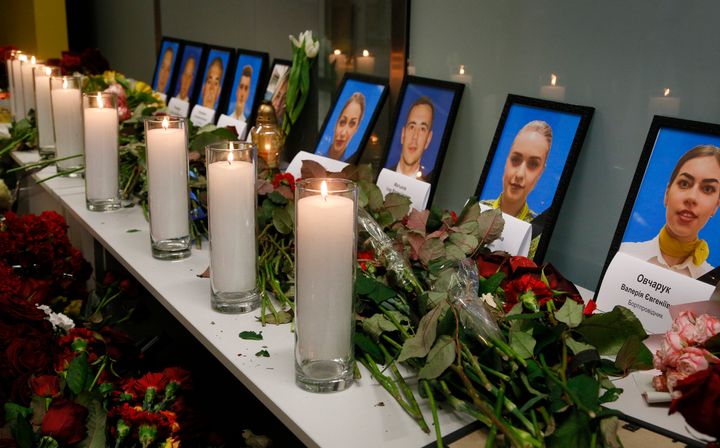Ukraine investigators are keen to search the site of Wednesday’s deadly crash southwest of Iran for possible debris of a Russian-made missile used by Iran’s military, it has emerged.
Oleksiy Danylov, the country’s security council secretary, said investigators wanted to search for debris after unverified images circulated on Iranian social media showing the debris of a Russian-made Tor-M1 surface-to-air missile of the kind used by the Iranian military.
An initial report by Iran’s civil aviation organisation said the plane had experienced an unspecified technical problem.
Tensions between Washington and Tehran have risen with the United States’ killing of a top Iranian general on Friday. Tehran retaliated with a missile strike on US targets in Iraq.

The Kiev team of investigators includes experts who participated in the investigation into the 2014 shooting down of Malaysian Airlines flight MH17, Danylov said.
The Malaysian airliner was shot down on July 17, 2014, over territory held by pro-Russian separatists in eastern Ukraine as it was flying from Amsterdam to Kuala Lumpur, killing all 298 people on board.
In a televised statement, Ukraine’s President Volodymyr Zelenskiy earlier asked people to refrain from speculation, conspiracy theories and hasty evaluations regarding the crash. He declared Thursday a day of national mourning.
Zelenskiy said he would speak by telephone with the Iranian president to step up cooperation in investigating the crash.
Meanwhile, Ukraine has outlined four potential scenarios that may explain the crash, including a missile strike, a collision, an engine explosion or terrorism.
An initial report by Iran’s civil aviation organisation said the plane had experienced an unspecified technical problem. The Ukrainian International Airlines Boeing 737-800, flying to Kiev and carrying mostly Iranians and Iranian-Canadians, crashed shortly after taking off from Tehran’s Imam Khomeini airport, killing all 176 people on board.
The Iranian report, which referred to the crash as an accident, cited witnesses on the ground and in a passing aircraft flying at high altitude as saying the plane was on fire while still aloft.
It said the three-year-old airliner, which had its last scheduled maintenance on Monday, encountered a technical problem shortly after take-off and started to head toward a nearby airport before it crashed. The report said there was no radio communication from the pilot and that the aircraft disappeared from radar at 8,000 feet.
It is so far unclear if any technical issue could be related to a maintenance fault or defective part.
Countries recognised under a UN-administered convention as participants should nominate who they wish to be involved in the Iran-led investigation, the Iranian report said.
As the country where the plane was designed and built, the United States would usually be allowed to be accredited but neither side has said whether US investigators will be dispatched to Iran.
The disaster puts a renewed spotlight on Boeing, which faces a safety crisis over a different type of 737, though the plane that crashed in Iran does not have the feature thought to have caused crashes of the grounded 737 MAX.

Investigations into airliner crashes are complex, requiring regulators, experts and companies across several international jurisdictions to work together. It can take months to fully determine the cause and issuing an initial report within 24 hours is rare.
A Canadian security source told Reuters there was evidence one of the engines had overheated.
The crash happened hours after Iran launched missile attacks on US-led forces in Iraq, leading some to speculate that the plane may have been hit.
The initial assessment of Western intelligence agencies was that the plane had suffered a technical malfunction and had not been brought down by a missile, five security sources ― three Americans, one European and the Canadian ― who asked not to be named, told Reuters.
The Ukrainian airliner took off at 6:12am, local time and was given permission to climb to 26,000 feet, the report said. It crashed six minutes later near the town of Sabashahr.
Bodies and body parts recovered from the site of the crash have been taken to the coroner’s office for identification, the report said.
Smouldering debris, including shoes and clothes, was strewn across a field where the plane crashed on Wednesday. Rescue workers in face masks laid out scores of body bags.
Onboard were 146 Iranians, 10 Afghans, 11 Ukrainians, five Canadians, three Britons and four Swedes, the report said, but said some may have held citizenship of other countries.
Ukrainian authorities have said those on board included 82 Iranians, 63 Canadians, and 11 Ukrainians.
The Tehran-Toronto via Kiev route was a popular for Canadians of Iranian descent visiting Iran in the absence of direct flights.

